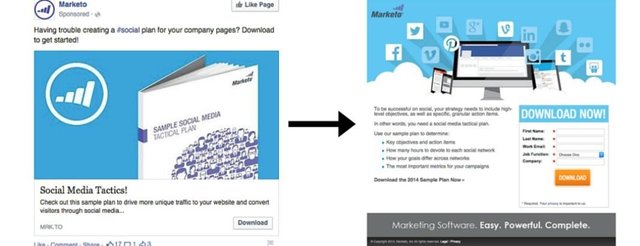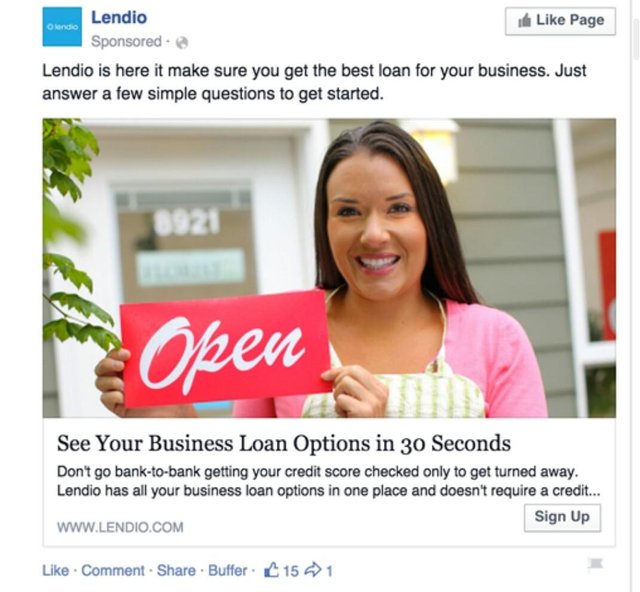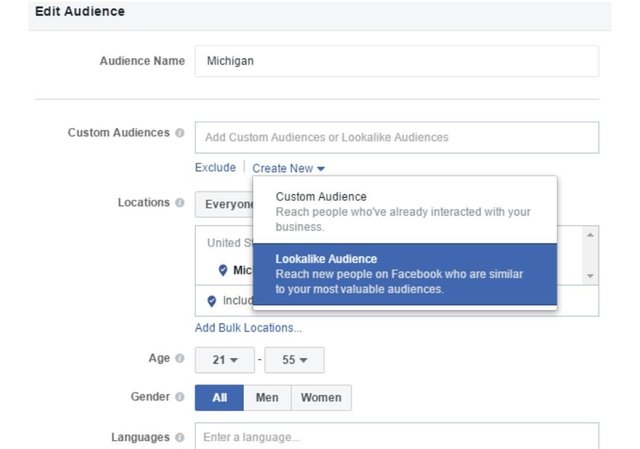11 Facebook Ad Strategies Every Online Business Should Be Using
Creating ads that convert isn’t always easy, especially when you’re paying for clicks but not seeing revenue-generating sales. Here are some proven Facebook ad strategies to improve conversions and engagement and save you on your ad spends.
Facebook is sitting on one of the largest consumer data sets currently available, working with companies like Datalogix along with data from government and public records, consumer contests, warranties, and more to create in-depth consumer profiles for its user base.
In fact, facebook uses nearly 100 personal data points to profile users and target ads to its user base. That might spell privacy concerns for the average user, but it’s a tremendous opportunity for you to reach new audiences. Given Facebook’s size, that’s a lot of people.
Recent data shows Facebook is boasting some 1.8 billion montly users. If you’re not advertising your business on Facebook, you’re leaving money on the table.
Thankfully, you don’t need a huge budget to see a return; according to research from nanigans, shared by seacrh Engine Wacth businesses who advertise on Facebook have seen as much as a 152% return on their investment.
You can see a significant return from social ads by using one or more of these Facebook ad strategies.
- Be smart about retargeting
You’ve likely seen retargeting firsthand. Visit a website and browse products or services, then jump to other sites or Facebook to see ads or suggested content from the brand you visited. It’s an increasingly popular way to get customers back into your sales funnel.
By installing the Facebook tracking pixel on your site, you can track specific user actions and then deliver content to their social feed based on those actions. For example, if a customer abandons their cart before checkout, you can retarget by showing the customer the products they forgot to purchase right in their Facebook feed.
With average cart abandonment hovering around 68%. Facebook retargeting campaigns are an effective way to reclaim some of those lost customers by promoting products they showed interest in, or offers they missed.
- Create custom landing pages
Most business owners want to push traffic back to their website, typically to a product or service page, when they run a Facebook ad.
This isn’t necessarily the wrong move, but you’re limiting the number of conversions you could make. If you send someone to a standard product or service page, there are a lot of distractions in your top level navigation that could lead them away, and not all customers who click on an ad or promoted post are ready to buy on the spot.
To hold their interest, warm them up to a purchase, and limit their ability to exit, consider creating hightly spesific landing pages

A custom landing page for a product category or service can answer additional questions, inform the user, leverage content specific to a certain audience segment, and then convert them with a very specific call to action.
- Lift exposure with social proof
Not every Facebook ad needs to be linked to a product or service to generate revenue. Some of the most effective campaigns are all about branding, and Facebook’s model for promotion can get you some serious exposure.
When you promote your Facebook page, you can target the people who are connected to your fans and followers, but are not yet connected to your page. When your ad goes live, your page is shown to a large audience that may share the interests of their friends. They’ll see your custom branded image with “ likes this.”

For a relatively small investment, you can drive additional likes and traffic to your brand page using this social proof. By aligning your fans with your brand, it creates a sense of trust among the extended audience.
- Make use of visuals to tell a story
Images can drive serious engagement on Facebook. In fact, Facebook posts with images see more than twice the engagement of posts with no images. Use an online photo tool, to easily create designs for your social media ads.
But don’t limit your ads to static images.
Organic engagement on Facebook is highest on posts with videos, and consumers are 1.81 x more likely to make a purchase after watching a video. For your next ad, consider creating video that tells a story. It doesn’t have to be a deep brand story, you just need it to be engaging and make a connection.Show how the product enhances the life of the consumer, or how a service provides value and solves a problem. If you don’t have the time or budget for a video production, consider creating a slideshow of images that tell a story.
Video or animation will have a higher chance of grabbing their attention than static ad images.
- Don’t neglect lookalike audiences
One of the best features in the Facebook ad platform is also one of its simplest: creating lookalike audiences. If you’re already growing a sizable following for your page, Facebook can use information about their activity, likes, demographics, interests, and behaviors to create a lookalike audience among its user database

It’s a terrific way to reach new audience segments that are far more likely to show an interest in your brand, product, or service.
- Target competitor audiences
If you’re working to build your audience on Facebook and you don’t have deeply defined audience personas (common for startups and small businesses new to advertising), then turn to your competitors.
When building an audience, you can target people who like or show interest in competitors. This doesn’t work for all pages, so you’ll be limited to those with a large following (several thousand or more).
- Create ads for multiple audiences
A quick way to waste ad budget is to create generic ads that target too wide of an audience. You’re likely to pay for a lot of clicks with far less conversion at the end of the funnel. Instead of testing a single campaign for your entire audience, create multiple ads with each one targeting spesific audience segments
This might seem time consuming, especially if you have a lot of products or multiple services, but this kind of audience personalization is the best way to reduce ad spend while dramatically increasing conversions. It’s also one of the methods that contributes to Zappos’ annual ROI of more than $10 million from their Facebook campaigns.
- Be transparent with price
A good way to control your cost per action or cost per click with Facebook ads is to weed out the people kicking tires. The ad might be enticing enough to get a click out of someone from your audience, but they may not want to make a purchase based on the price they see on your site.
The cost of window shoppers in Facebook can ad up, so try inserting the price on your ad to make the costs clear. This is effectively targeting the people most likely to buy, who recognize the value of your offer and aren’t making a purchase based on price alone.
You’re likely to see a noticeable drop in click rates (unless you’ve got a deeply discounted promotion compared to competitors), but listing the price will reduce cart abandonment rates and ad costs and create a higher conversion for the traffic.
- Tap into purchase behaviors
When facebook forged partnerships with data brokers like Epsilon and Datalogix in 2013, they opened the doors to new ad targeting. You can target that purchasing behavior through subcategories like buyer profiles, clothing, food, health, and beauty. When you drill down into the subcategories, Facebook will show you how many users you can target that have matched offline purchasing data.
- Everyone Has Major Life Events
Facebook can help you create ad campaigns that target customers who experienced specific life events, even within specific timelines. For example, wedding planners can target specific people within a geographic region who got engaged within a certain time frame. Movers or remodeling contractors could get an ad in front of people who just purchased their first home.
- Get granular with targeting
One of the most impressive aspects of Facebook ads is the ability to layer your targeting. This allows you to make your audience targeting more and more specific with each piece of criteria.
Using combinations of behaviors, demographics, geographic data, interests, and more, you can create a very specific audience. Keep in mind, the more layers you add, the smaller your audience becomes. On the upside, with a very specific audience, you’re targeting only the people who are most likely to convert.
How targeted can you get? Right down to the individual person. A hilarious example of this was featured in adweek when a marketer specifically targeted his roommate with ads that were so specific it nearly drove the poor guy mad.